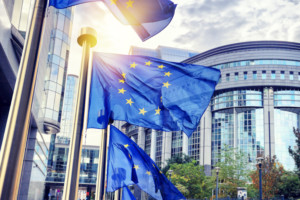 For quite some time now, the European Commission (EC) is putting a special focus on biodegradable and compostable polymers when assessing the general role of bioplastics. This becomes obvious when looking at the number of related EU studies and reports that had been published in 2020. The last publication in this regard was the European Commission’s Scientific Advice Mechanism’s (SAM) report “Biodegradability of plastics in the open environment” in mid-December of last year. Recently, political decision makers in the Commission seem to increasingly acknowledge the positive role of compostable plastics in putting the circularity model into practice. This is important, as the Commission aims at developing a legal framework for all bioplastics, biodegradable, compostable as well as durable bio-based, throughout 2021. The framework is a fundamental element of the Circular Economy Action Plan included in the European Green Deal. This process coincides with the revision of the Packaging and Packaging Waste Directive, which includes the Essential Requirements for Packaging and whose proposal is also expected towards the end of this year.
For quite some time now, the European Commission (EC) is putting a special focus on biodegradable and compostable polymers when assessing the general role of bioplastics. This becomes obvious when looking at the number of related EU studies and reports that had been published in 2020. The last publication in this regard was the European Commission’s Scientific Advice Mechanism’s (SAM) report “Biodegradability of plastics in the open environment” in mid-December of last year. Recently, political decision makers in the Commission seem to increasingly acknowledge the positive role of compostable plastics in putting the circularity model into practice. This is important, as the Commission aims at developing a legal framework for all bioplastics, biodegradable, compostable as well as durable bio-based, throughout 2021. The framework is a fundamental element of the Circular Economy Action Plan included in the European Green Deal. This process coincides with the revision of the Packaging and Packaging Waste Directive, which includes the Essential Requirements for Packaging and whose proposal is also expected towards the end of this year.
A lot has been discussed and published in the debate over compostable plastics so far. Not everything reflects the current standard of knowledge or is always based on scientific facts. Therefore, it is important that we summarize the key aspects of compostable plastics from time to time: with reference to the European waste hierarchy, industrial compostable plastics can provide added value through organic recycling (i.e. industrial composting and anaerobic digestion) as an additional waste treatment option. In order to ensure that industrial compostable plastics can deliver the optimal contribution to realising a circular economy in Europe, it is important to acknowledge that they are not a general solution, but a specific technology for specific products that can foremost help to efficiently manage the biggest fraction of the municipal waste stream: bio-waste. Industrially compostable plastics certified according to the harmonised European standard EN 13432 for the organic recovery of packaging contribute to efficient waste management and circular preservation of resources. Because they optimize the separate collection of bio-waste and help diverting bio-waste from landfills, incineration, and mechanical recycling into organic recycling. Compostable plastics reduce impurities in the organic waste collection caused by misthrows of conventional, non-biodegradable plastics that often end up in the final compost and thereby in the environment. They also provide additional second-generation bio-based feedstock that can be used for producing bio-based plastics or organic fertilizers. Through their processing in anaerobic digestion, biodegradable plastics also support the production of biogas.
By recognising that prevention and reduction are paramount in the EU waste hierarchy, and that bioplastics are not intended to simply replace existing applications but offer innovative solutions, the bioplastics industry already proposed a list of proven applications for industrial compostable plastics that make a valuable contribution to a circular economy. These include bio-waste bags, very thin plastic bags as well as fruit and vegetable bags. Proven applications are also tea bags, coffee capsules, pads and filters as well as fruit stickers. They also include cling film, paper towels, catering items, e.g. cups, trays, plates, and cutlery and multi-material flexible packaging for perishable food.
The list corresponds to a set of criteria that should be applied when it comes to the question of when plastic products should be made from compostable plastics. In the case of plastic packaging contaminated with food waste, compostable plastic should be used to ensure that this packaging ends up in the bio-waste instead of the residual waste. Plastic products that likely end up in the organic waste collection rather than being effectively mechanically recycled should be made from industrial compostable plastic from the start. The potential to reduce non-biodegradable plastics contamination of bio-waste should also be amongst the key criteria. And, last but not least, if there is no efficient re-design possible in order to move to reusable solutions, compostable plastics should be the alternative in consideration.
Indeed, this year will be of great importance for the whole bioplastics industry. It is reassuring that leading EU institutions, including the European Parliament, see the role of bioplastics in Europe’s efforts to establish a circular economy. The EU Parliamentarians just confirmed this role in their recently published INI report on the Circular Economy Action Plan.